Bharti Kher exhibition at Hauser & Wirth, New York

Like the Ben Day dot was to Roy Lichtenstein, the bindi is to Bharti Kher. Since 1995, the London-born, Delhi-based contemporary artist has made the stick-on dots (used primarily by South Asian women as decorative accessories) to 'paint' 2 and 3D artworks. She sticks bindis on painted board to create pixelated-looking geometric or abstract landscapes, adheres thousands of bindis on to monumental sculptures (like her well-known, life-size elephant creations), and more recently applies them to salvaged architecture and decorative furniture.
In her current show, on view at Hauser & Wirth Gallery in New York - located in an Upper East Side townhouse - Kher uses the intimate domestic setting to play with motifs that frequently show up in her work, including cultural and gender stereotypes, the politics of space, and mythology.
'In Asia and India, the house and domestic space constitute a female domain and this is where women are able to truly assert more "self" within space,' Kher says. 'But a house is also fraught with social, economic and sexual excesses that can obscure or even threaten to obliterate the spiritual connections that are our greatest resources.'
Elements that would be found in a typical home are present - stairs, mirrors, heating devices - however they are altered to a mythical or magical state with the use of her decorative embellishments, circular or sperm-shaped bindis.
The exhibition’s title ‘The hot winds that blow from the west’ takes its name from what is called the Loo: a fierce and dry afternoon wind that blows over northern and parts of western India on summer days. 'We think of winds as harbingers of change, carrying voices of transformation,' Kher says.
In the work of the same name - installed in a light-filled back gallery - a dense cube of stacked radiators, which the artist sourced from the US, are now rusted and obsolete, stripped of their utilitarian function, evoking the sense of the west’s glorious yesteryear and declining future as a region of innovation and power. Embossed brand names, steam valves, and the rusted ribs of the cast iron skeletons feel ghostly and sepulchral.
In the front gallery, an abstract landscape titled ‘A view of the forest’ comprises hundreds of overlapping bindis in various shades of earthy greens—what becomes, at close view, an abstracted landscape of the very scene the title describes and, from afar, is an elegantly dizzying pattern.
The central ground floor gallery features a 17-ft staircase climbing from the floor to the ceiling. The structure, salvaged from an Indian home, is splattered with red paint and speckled with sparkling sperm-shaped bindis. Titled ‘A line through space and time’, it evokes the classical architecture in an Indian home and, leading nowhere, the confinement of domesticity in this space.
Upstairs, a gallery is filled, salon-style, with gilded mirrors that are striped with bindis of various sizes and cracked violently yet elegantly at the same time. In the cracked reflection, viewers are incorporated into the work; the work is titled ‘Reveal the secrets that you keep’.
And finally, her figurative sculpture ‘The Messenger’ is a more recent development in Kher’s practice. Nude and without bindi embellishments, the fibreglass hybrid figure - part female, part mythological figure - evokes the Hindu goddess Dakini, who is said to be an agent for revelation and transformation. Like how Kher sees the bindi as not a decorative accessory but a third eye that links the spiritual and real world, this figure delivers a similar message.

The 17-ft piece evokes the classical architecture in an Indian home and, leading nowhere, the confinement of domesticity in this space

'The hot winds that blow from the West', 2011, comprises 131 old radiators sourced from the US, which are now rusted and obsolete, stripped of their utilitarian function, evoking the sense of the west’s glorious yesteryear and declining future as a region of innovation and power
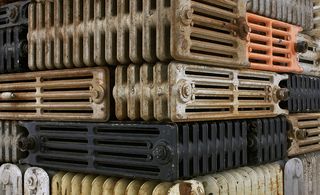
The artwork takes its name from what is called the Loo: a fierce and dry afternoon wind that blows over northern and parts of western India on summer days
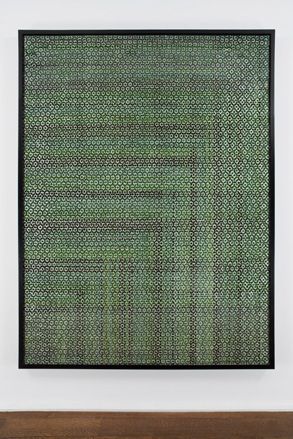
'A view of the forest', 2012, comprises hundreds of overlapping bindis in various shades of earthy greens
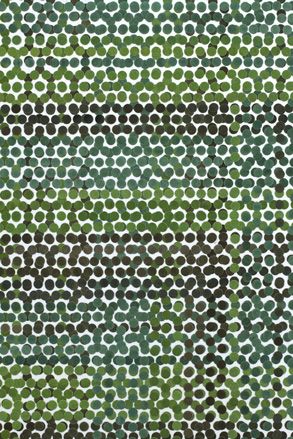
On close inspection, it is an abstracted landscape of the very scene the title describes, while, from afar, it is an elegantly dizzying pattern

Upstairs, a gallery is filled, salon-style, with gilded mirrors that are striped with bindis and cracked violently yet elegantly. In the cracked reflection, viewers are incorporated into the work, titled ‘Reveal the secrets that you keep’, 2011 (detail view)
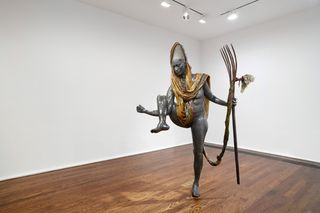
Kher's figurative piece, ‘The Messenger’, 2011, is a recent development in her practice. Nude and without bindi embellishments, the fibreglass hybrid figure is part female, part mythological figure

It evokes the Hindu goddess Dakini, who is said to be an agent for revelation and transformation
ADDRESS
Hauser & Wirth
32 East 69th Street
New York, NY 10021
TELEPHONE
1.212 794 4970
Wallpaper* Newsletter
Receive our daily digest of inspiration, escapism and design stories from around the world direct to your inbox
-
 Utilitarian men’s fashion that will elevate your everyday
Utilitarian men’s fashion that will elevate your everydayFrom Prada to Margaret Howell, utilitarian and workwear-inspired men’s fashion gets an upgrade for S/S 2024
By Jack Moss Published
-
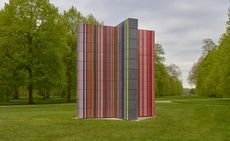 Gerhard Richter unveils new sculpture at Serpentine South
Gerhard Richter unveils new sculpture at Serpentine SouthGerhard Richter revisits themes of pattern and repetition in ‘Strip-Tower’ at London’s Serpentine South
By Hannah Silver Published
-
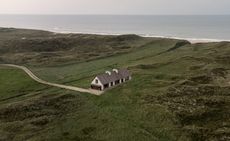 Vipp’s Scandinavian guesthouse offers a sleek setting amid a wild landscape
Vipp’s Scandinavian guesthouse offers a sleek setting amid a wild landscapeVipp Cold Hawaii is a Scandinavian guesthouse designed by architecture studio Hahn Lavsen in Denmark’s Thy National Park
By Sofia de la Cruz Published
-
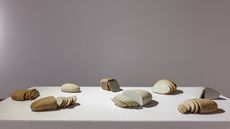 ‘In Our Veins Flow Ink and Fire’: a fervent return for India’s Kochi-Muziris Biennale
‘In Our Veins Flow Ink and Fire’: a fervent return for India’s Kochi-Muziris BiennaleIn its fifth edition, the postponed Kochi-Muziris Biennale surpasses the intersectional, collaborative essence of previous editions, writes Aastha D
By Aastha D Published
-
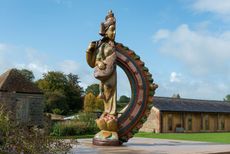 Bharti Kher escapes to Somerset in search of solitude
Bharti Kher escapes to Somerset in search of solitudeThe New Delhi-based artist presents an exhibition of new installation, painting and sculpture work following her 2017 residency at Hauser & Wirth Somerset
By Harriet Lloyd-Smith Published
-
 The Science Museum celebrates India’s scientific and cultural fabric with two illuminating shows
The Science Museum celebrates India’s scientific and cultural fabric with two illuminating showsBy Charlotte Jansen Last updated
-
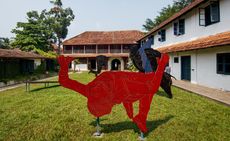 A colonial warehouse in Kerala hosts the third Kochi-Muziris Biennale
A colonial warehouse in Kerala hosts the third Kochi-Muziris BiennaleBy Emma O'Kelly Last updated
-
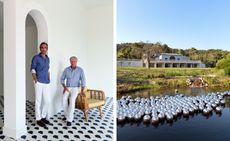 Special argent: a silvered family house holds its own at French sculpture park Domaine du Muy
Special argent: a silvered family house holds its own at French sculpture park Domaine du MuyBy Natalia Rachlin Last updated
-
 A legacy of Bangladeshi architecture on show at the Dhaka Art Summit
A legacy of Bangladeshi architecture on show at the Dhaka Art SummitBy Nick Compton Last updated
-
 Eco conscience: Vibha Galhotra’s creations comment on New Delhi pollution
Eco conscience: Vibha Galhotra’s creations comment on New Delhi pollutionBy Brook Mason Last updated
-
 Existentialism and Indian design collide in Subodh Gupta’s latest New York show
Existentialism and Indian design collide in Subodh Gupta’s latest New York showBy Pei-Ru Keh Last updated